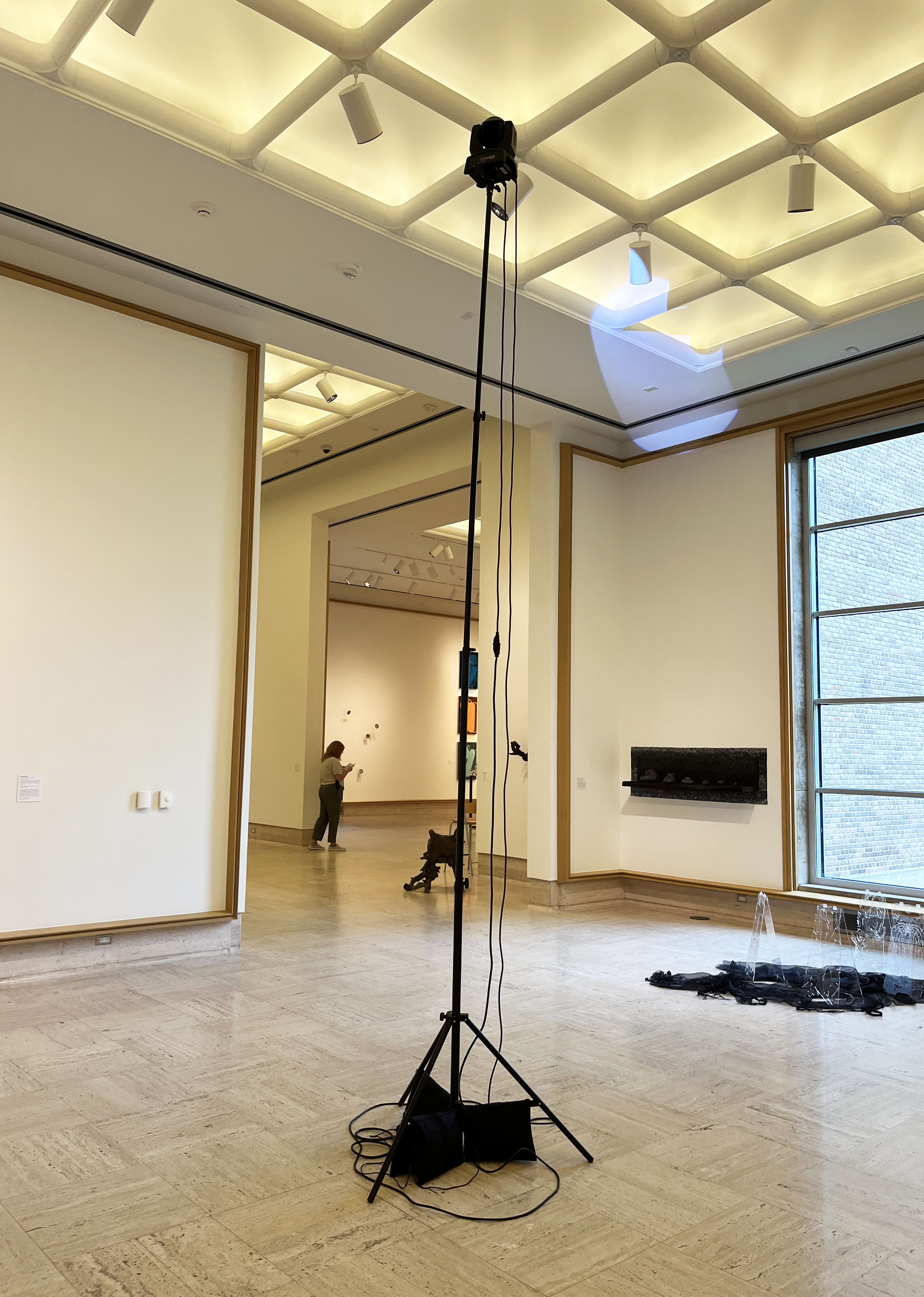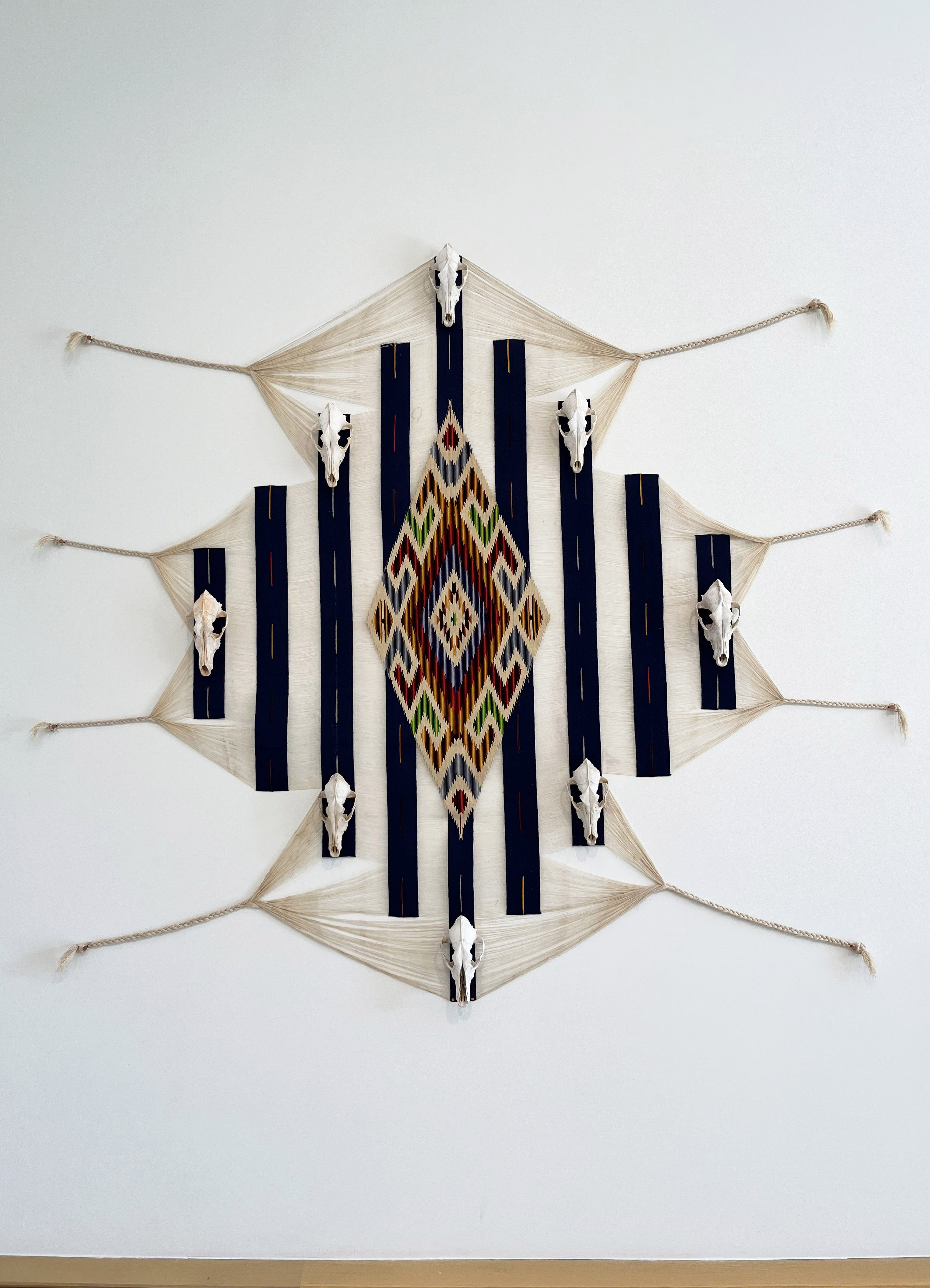
Antonia Piedmonte-Lang
May 22, 2024
This year’s annual MFA show at the Cranbrook Art Museum showcases work from 59 artists—graduates from eleven departments at the Cranbrook Academy of Art. Curators Katt Goffnet and Andrew Ruys de Perez, who also worked on last year’s exhibition together, carefully selected pieces over multiple studio visits and conversations with the artists. This process initially began with the students submitting several works for review in February.
.jpg)
The Cranbrook MFA program is known for its close community and artists-in-residence as faculty heads, attributes defined at its founding in 1932. The campus and museum, designed by Finnish architect Eliel Saarinen, feature buildings, sculptures, and gardens in relational conversation—in front of the museum, the circle of figures in Carl Milles’ Orpheus Fountain float outwards, while the museum fans out in the central grounds, connected to a pavilion and lower garden. As for the exhibit, it is digestible and well-curated, which is impressive considering the diverse compilation of media—the departments of 2D design, 3D design, 4D design, architecture, ceramics, fiber, metal-smithing, painting, photography, print media, and sculpture are all represented. The first several gallery rooms feature paintings and wall pieces, while larger wall installations and sculptures are arranged further back.
 2 Large.jpg)
One work that particularly stands out to me is Robert Thompson’s Clinch (2D Design), located in the first room of the exhibit. It is a diptych with a soft blue background and orange palette. The treatment of shape reminds me of a Bruegel figure; especially the sturdy legs in brown pants and shoes, situated on the right side. A body with many limbs launches itself into this arrangement, while a shell sits in the divided foreground. The hues and textures produce continuity in the two side-by-side canvases, and invite the eye to move between the bodies and objects—reinforcing the slippage among discrete parts.
.jpg)
Moving further into the exhibition, the body becomes a clearly evident theme. Detroit-based artist Ian John Solomon’s Eclipse Tide (Photography)*, a film collage on silk, depicts a person on a bench whose face, in profile, nests in his body. Parts of his upper arms drift in the background, where oceanic tides lend a sense of weightlessness. Across the room, Eel Costello’s body (Sculpture) hangs between two walls. Composed of latex stretched across a suspended steel circle, the trampoline-esque axis invokes play and tension—the viewer is invited to touch the piece to induce a light bounce. In the next room, Sam Slipkovich’s Boat Folk (Painting) takes a different material approach, a quilt laid flat on the ground in the shape of a sprawled figure. A small three-dimensional boat containing dolls rests where the head would be. The pieces of the quilt have patterns in them—one is a panel with illustrations on it, like a child’s pajamas, wheels and a yellow “Slow” sign, which creates disjuncture between the material’s associations with security and the precarity faced by migrants, refugees, and other travelers. The sneakers worn on the feet of the fabric-body are jarring, considering how large they are in the spatial context and also how worn they are, being real shoes.
.jpg)
Ena Kantardžić’s Untitled [...] (4D Design)* towers over the viewer from its placement in the center of an adjacent gallery. A light swivels and moves on the axis of a tall pole with a tripod base. It remains on, and active, regardless of the presence of visitors or time of day. Time is the additional dimension for the entire department of 4D design, a program which is also in its fourth year of existence, and Kantardžić’s work alludes to what they call the “non-durational.” The spotlight acts as a head—it swivels unpredictably, as if anxious or perplexed. At the same time, its height is intimidating, its jagged motions are unsettling, and the spotlight occupies the high space of a security camera. Notably, Kantardžić won the Hope Award for artists whose practices operate in the tradition of historical materialism.
In one of the last gallery spaces, a beautifully crafted work by Kelly Tapia-Chuning, voicing the silenced; we survive you (Fiber),* features eight coyote skulls pinned around the perimeter of the work. For Tapia-Chuning, the coyote relates to the survival of Indigenous people throughout Mexico and the U.S., despite the ever-continuing violence against them. In this work, Tapia-Chuning takes apart serapes (Mexican blankets) and reassembles them. A diamond shape in the center of the piece is composed of small geometric shapes in red, green, and blue. Slim black rectangle shapes run across the work symmetrically, and four ropes extend out on either side, attaching the work to the wall in a way that boldly affirms its new structure.

Though only a limited account of the bodies of work created by the 2024 graduates, the exhibition was remarkable for students’ attention to identity, raising facets of self-hood and intersectionality, as well as commentary on global events. The artists negotiate with scale and fragmentation, speaking to a social climate which seems ever more precarious. The exhibition offered a brief glimpse into the many diverse practices of the recent MFA graduates, enticing our interest into how these artists’ work will come to develop in the world, and whether they will appear on the Detroit (or global) art scene in years to come.

The 2024 Graduate Degree Exhibition of Cranbrook Academy of Art was on view at the museum from April 7 until May 12. Additional images and a virtual walkthrough of the exhibition can be viewed on the Cranbrook Art Museum website.
*Each year, the museum selects a work to become part of Cranbrook’s permanent collection. These works were nominees for the 2024 Graduate Degree Exhibition Purchase Award. This year’s winner was Evan Mazellan’s Wrestlers (After Carl) (Painting).